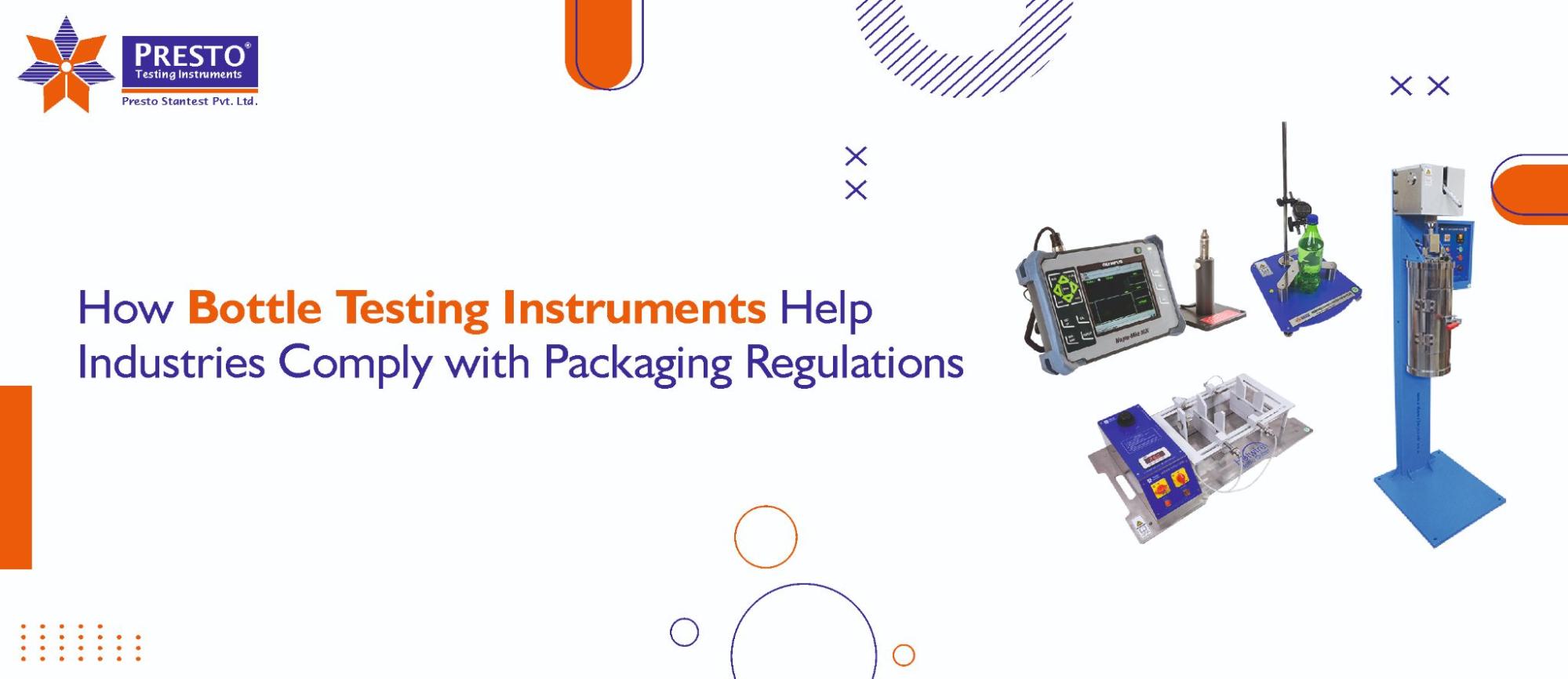
A Bottle Burst Tester is used to assess the strength and pressure resistance of PET and plastic bottles. It helps manufacturers ensure product durability by applying controlled pressure until the bottle bursts.
A good bottle has good structural strength, and proper functionality and is carefully designed such that the product is also safe for users and pleasing to the eyes of a customer. Due to strict quality control requirements, advanced bottle testing instruments can be utilised.
This blog explores advanced bottle testing solutions, deep dives into their technical nuances and innovative methodologies, and describes the benefits they provide to manufacturers. Whether a bottle burst tester or bottle cap torque tester, we will consider the ways these instruments can address some quality assurance challenges while assuring compliance with industry standards.
Presto has more than four decades of experience in the industry and was known to be one of the pioneers among the manufacturers of bottle testing instruments. We carry a diversified portfolio including top-of-the-line products, such as the bottle cap torque tester, bottle perpendicularity tester, and so much more. We specialize in producing innovative solutions tailored to meet stringent quality control requirements.
Testing for a bottle is a multi-faced process that includes various mechanical and physical tests to test performance metrics such as burst pressure, cap torque, perpendicularity, and structural strength. Each parameter has a direct consequence on product safety, usability, and regulatory compliance. Here are the key points:
Bottle Burst testers tests the bottle that they should not deform or rupture under a specified internal pressure. This test is particularly important for carbonated drinks and pharmaceuticals, where contents are pressurized.
Bottle Cap Torque Tester is used to measure the opening and closing torque The cap is neither too tight (which can result in consumer dissatisfaction) nor too loose (which can compromise seal integrity).
The bottle perpendicularity tester ensures the bottle's orientation accuracy so that any minor tilt doesn't hamper the productivity of an automated filling line.
Tolerance levels are typically set within 0.5 mm deviation for high-speed bottling operations.
Hot Wire Bottle Cutter
The bottle cutting machine provides clean sectional cuts to analyze wall thickness, material distribution, and defects in a non-destructive manner. This analysis is integral for the maintenance of uniformity in lightweight bottle designs.
1. Automation and Data Analytics Modern equipment is coming with IoT-enabled sensors and AI-driven analytics that monitor and predict maintenance in real time. For instance, a smart bottle burst tester automatically logs pressure variations and compiles comprehensive reports for compliance documentation.
2. High Precision SensorsInstrumentation with piezoelectric or capacitive sensors ensures accuracy up to 0.01%. This level of precision reduces false positives/negatives and instils trust in the results of the test.
3. Flexibility Modern systems are designed with flexibility in mind to allow compatibility with different bottle material types, such as PET, HDPE, or glass, and different-sized bottles, from small pharmaceutical vials to large water jugs. Adjustable clamping and modular fixtures add greater flexibility.
4. Friendliness of the User InterfacesGraphical user interfaces facilitate complex devices. Compatibility with software platforms like LabVIEW industry standard makes data manipulation seamless and workflow-friendly.
What makes Presto stand out is our commitment to precision, durability, and customer-centric innovation. Every product is calibrated and validated to the finest detail, ensuring ISO and ASTM compliance. We are synonymous with reliability and excellence in the testing instrumentation industry, trusted by leading global brands.
Q1: What factors should I consider when selecting a bottle testing instrument?
Look for features like material compatibility, precision levels, automation capabilities, and compliance with relevant industry standards.
Q2: How often should testing instruments be calibrated?
Calibration frequency depends on usage intensity and environmental factors but typically ranges between 6 months to 1 year.
Q3: Can a single instrument handle multiple tests?
Yes, advanced instruments often feature modular designs, enabling multiple test functions with interchangeable fixtures.
Q4: How does bottle perpendicularity impact production?
Misaligned bottles can cause spillage and downtime in automated filling lines, directly affecting productivity.
Q5: Are these instruments suitable for small-scale production?
Absolutely, Many manufacturers offer compact, cost-effective models ideal for small to medium enterprises.
Advanced bottle testing instruments are not just quality control measures but strategic decisions that help boost a brand's reputation, guarantee compliance, and enhance operations efficiency. Manufacturers will be able to achieve unmatched precision and reliability by using such advanced technologies as bottle burst testers, bottle cap torque testers, and bottle perpendicularity testers.
As industry leaders, Presto is there to guide your journey towards excellence. Partner with us to revolutionize your quality assurance processes and get ahead in the competitive market.
Get the best bottle burst tester price! Ensure quality with our reliable testing solutions. Contact us: Mail: info@prestogroup.com , Phone: +91-9210 903 903. Limited offer, act now!
Our latest product catalogue cum company profile is now
available to download. Where should we send your FREE copy?
